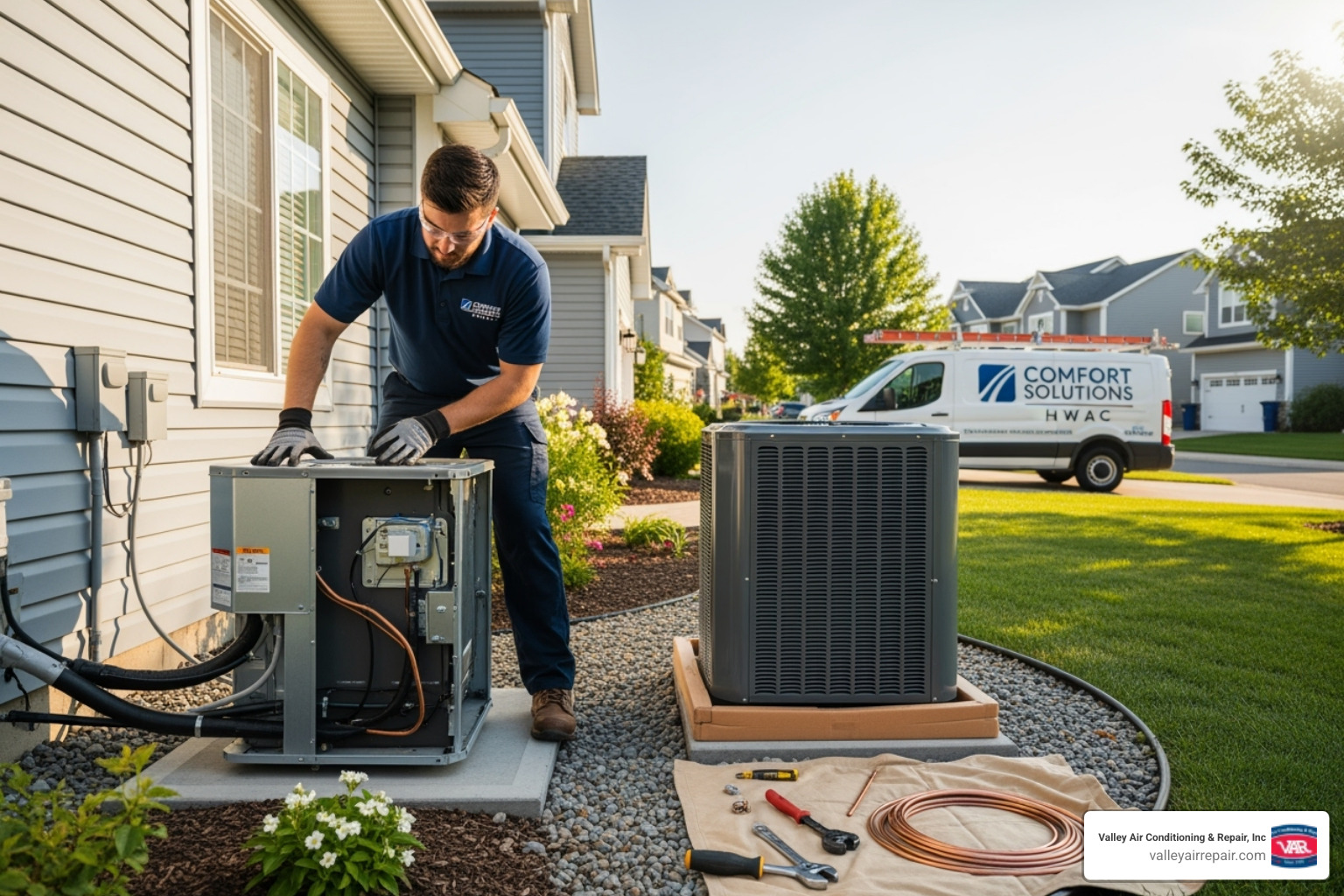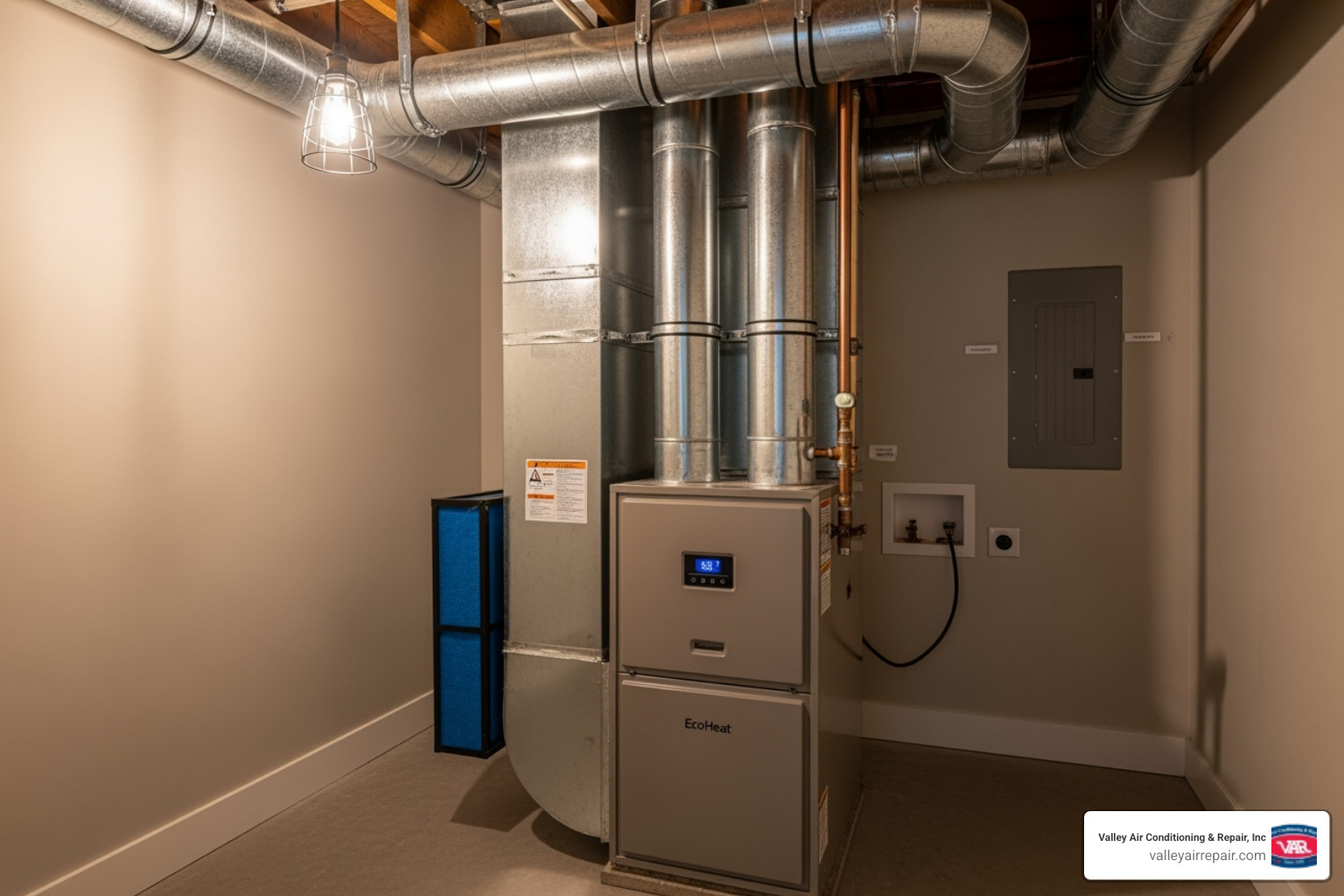Should You Upgrade Your HVAC System? What You Need to Know
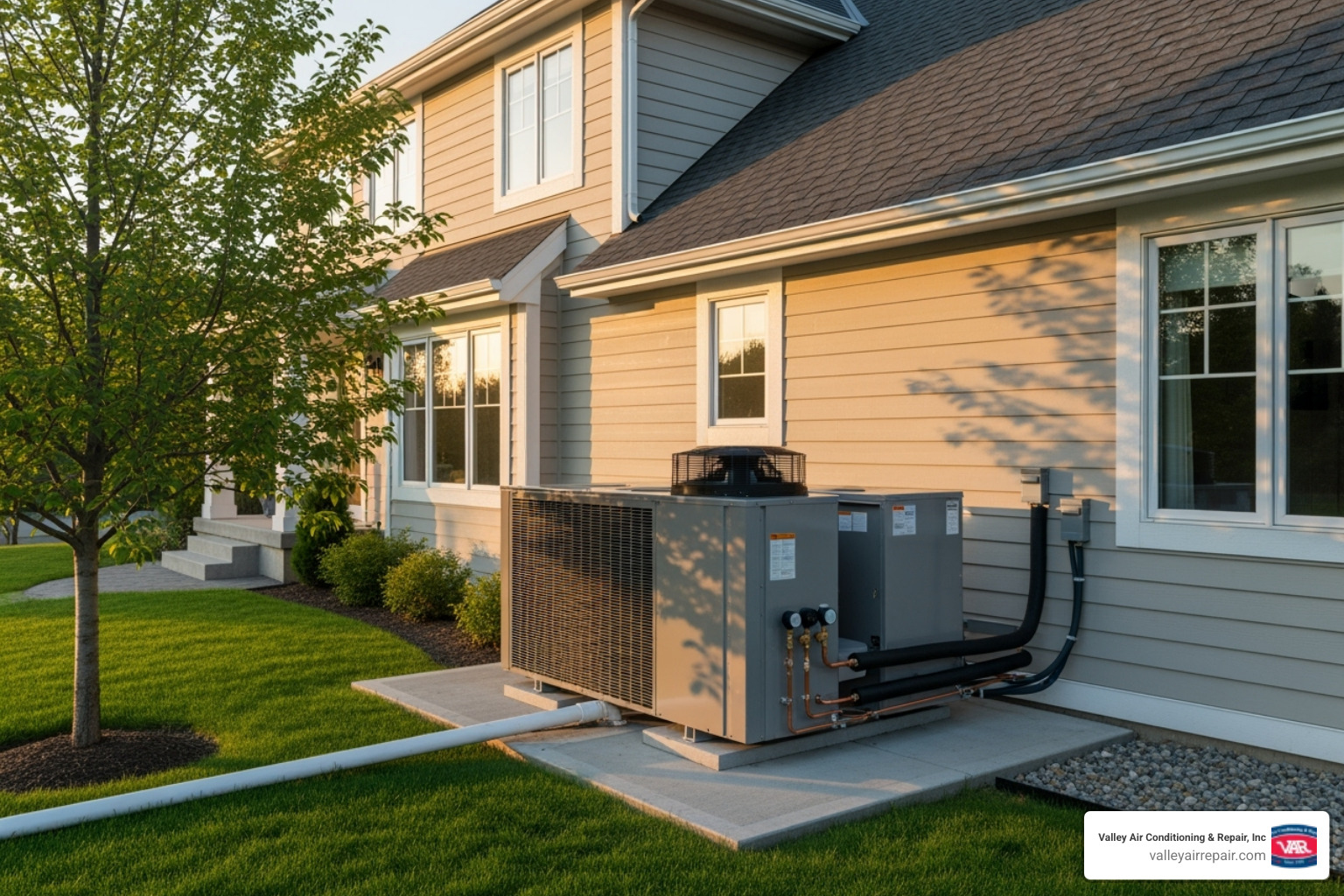
Why HVAC System Upgrades Matter for Your Home
An hvac system upgrade can transform your home's comfort while dramatically reducing your energy bills. If you're wondering whether it's time to upgrade, here are the key benefits and signs to look for:
Top Reasons to Upgrade Your HVAC System:
- Energy Savings: Reduce monthly utility bills by 20-40%
- Age: Systems over 10-15 years old lose efficiency
- Repair Costs: Frequent breakdowns signal replacement time
- Comfort Issues: Uneven temperatures, poor airflow, strange noises
- Air Quality: Newer systems filter out more allergens and dust
- Home Value: Modern HVAC can increase property value up to 10%
Your heating and cooling system works harder than almost any other appliance in your home. When it's outdated or failing, you'll feel it in your comfort and your wallet.
The Department of Energy recommends replacing HVAC systems after 10 years of service. Why? Because newer systems use advanced technology that can cut your energy consumption dramatically. One Phoenix homeowner saw their monthly energy bill drop from $200-$300 to just $70 after upgrading from a 2010-era unit to a new variable speed system - that's a 65% reduction.
But energy savings are just the beginning. Modern systems also provide better temperature control, quieter operation, and cleaner indoor air. Plus, with smart thermostats and zoning systems, you get precise control over your home's comfort.
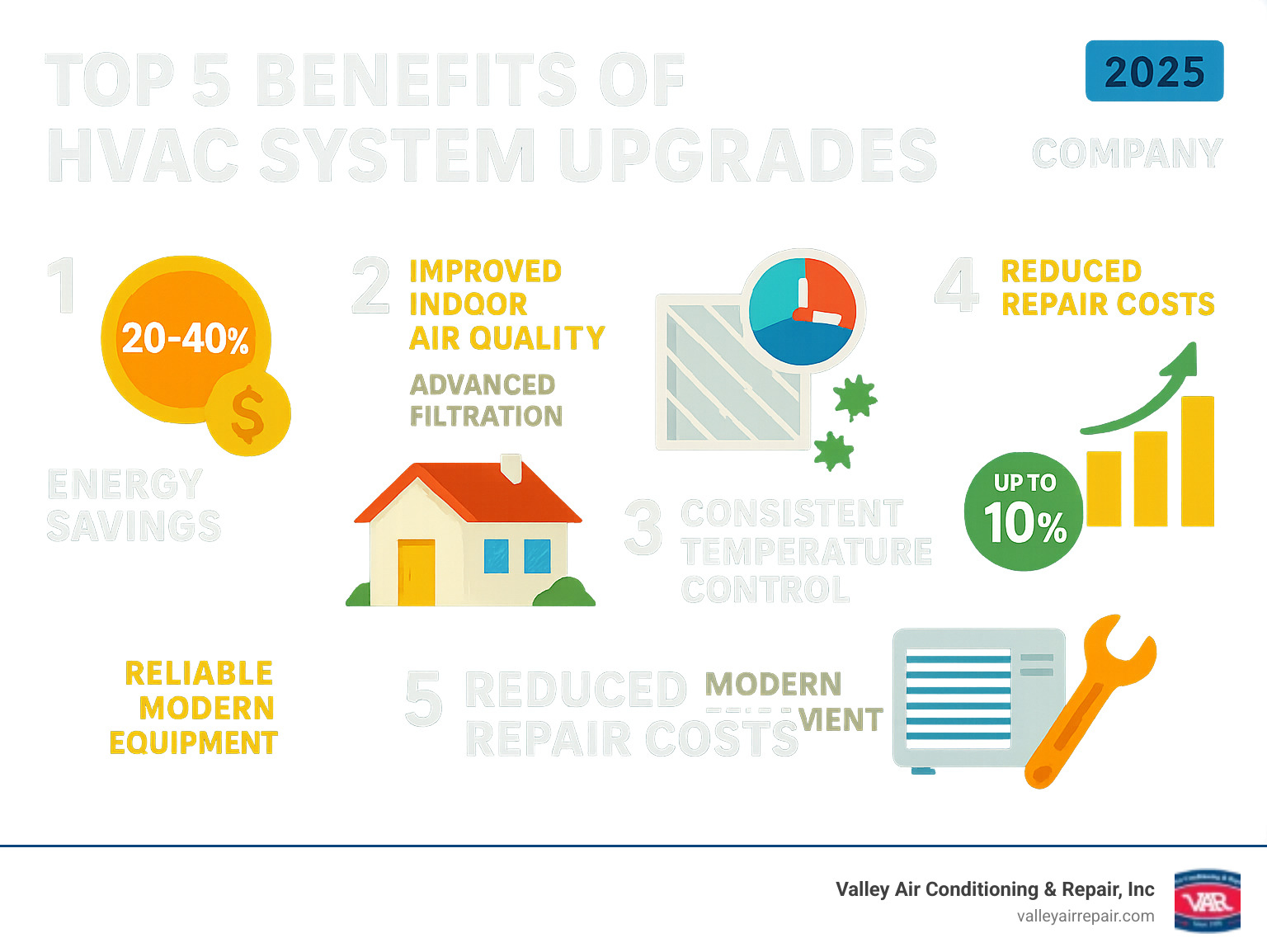
7 Telltale Signs Your HVAC System Needs an Upgrade
Your HVAC system has a way of sending you messages when it's ready to retire. Sometimes it whispers through higher energy bills, other times it shouts with strange noises at 2 AM! After serving homeowners throughout the Valley - from Fresno to Madera, Selma to Clovis - since 1970, we've learned to recognize these distress signals. Here are the seven most common signs that it's time to consider an hvac system upgrade.
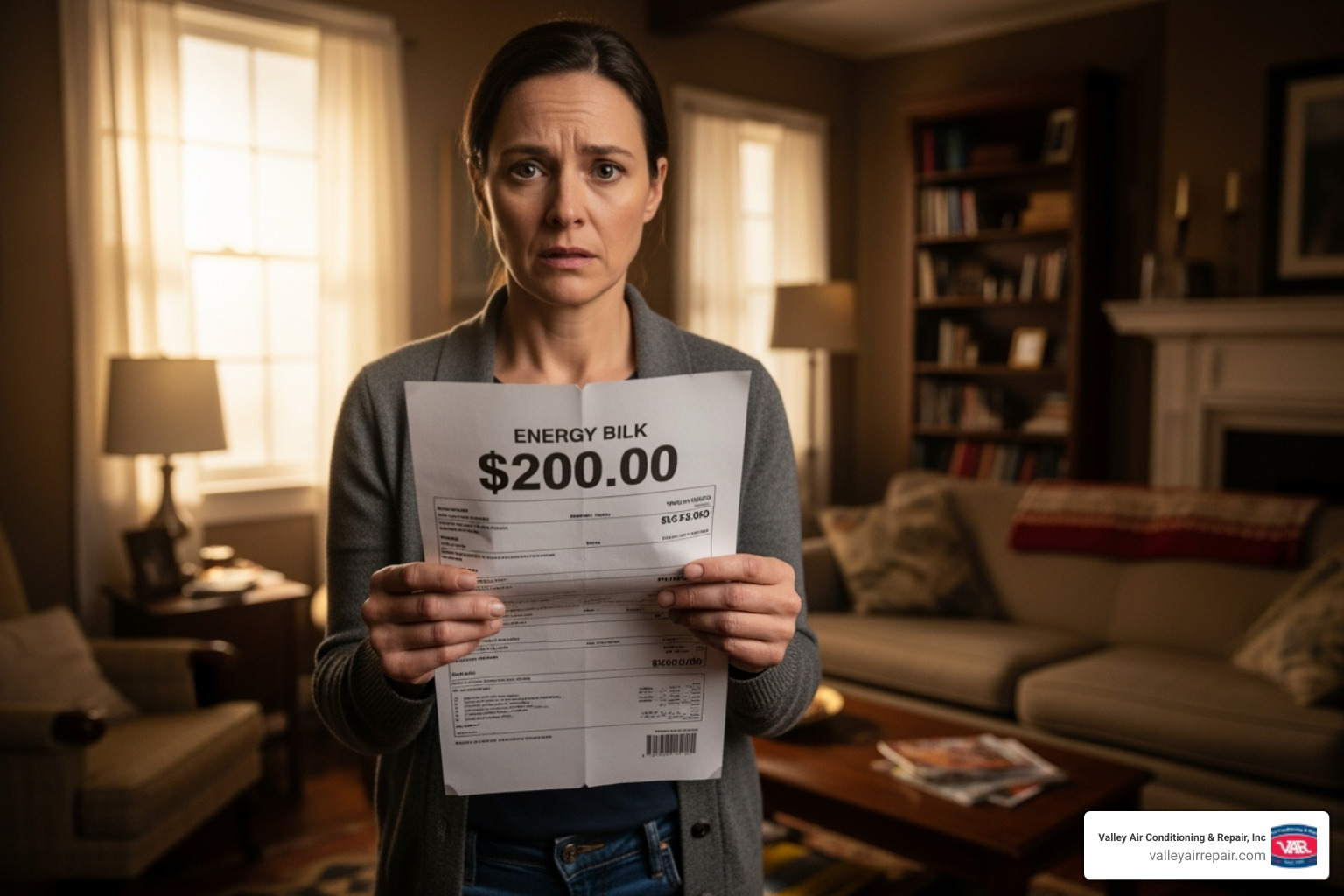
Your System is Over 10-15 Years Old
Age tells a story, especially when it comes to HVAC systems. Air conditioners and heat pumps typically serve faithfully for 10-15 years, while furnaces can stretch a bit longer, often reaching 15-20 years. But here's the thing - even if your older system seems to be working fine, it's likely costing you more than you realize.
The Department of Energy recommends replacing your HVAC system after 10 years of service, and there's solid reasoning behind this recommendation. Efficiency loss happens gradually over time. Your 12-year-old system might still cool your home, but it's probably using 20-30% more energy than it did when new.
Think of it like driving an old car that still runs but guzzles gas. Eventually, the monthly savings from a fuel-efficient model make the upgrade worthwhile. The same principle applies to your HVAC system - newer models work smarter, not harder.
You're Experiencing Poor Indoor Air Quality
Your HVAC system does double duty: it controls temperature and the quality of air you breathe every day. When dust accumulation becomes a weekly battle, when allergies flare up more often at home than outdoors, or when you notice humidity issues like condensation on windows, your aging system might be struggling.
Mold and mildew odors are particularly concerning signs. Older systems often have compromised ductwork that harbors pollutants, and their less efficient filters can't capture the tiny particles that trigger respiratory issues. Modern systems offer advanced filtration options that can dramatically reduce airborne contaminants.
We've seen families transform their home environment with an hvac system upgrade that includes better air filtration. If breathing easier at home sounds appealing, it's worth exploring your options. More info about Residential HVAC Services
The Cost of Repairs is Piling Up
Nobody wants to be on a first-name basis with their repair technician (though we do enjoy meeting our customers!). When repair visits become frequent, it's your system's way of saying it's ready to retire. The 50% rule is a helpful guideline: if repair costs exceed half the price of a new system, replacement usually makes more financial sense.
Breakdown frequency increases as systems age, and part availability becomes a real challenge. Systems using R-22 Freon face particularly expensive repairs since this refrigerant is no longer produced. A cost-benefit analysis often reveals that the peace of mind and reliability of a new system outweigh the mounting repair bills.
Beyond frequent repairs, watch for these warning signs: uneven temperatures throughout your home suggest your system can't distribute air properly, strange noises like banging or grinding indicate worn components, poor airflow from vents points to blower or ductwork issues, rising utility costs without increased usage signal declining efficiency, and outdated technology like R-22 refrigerant makes repairs increasingly expensive.
When these signs start appearing, an hvac system upgrade isn't just about comfort - it's about avoiding the stress and expense of constant breakdowns. More info about HVAC Repair in Fresno, CA
The Major Benefits of a Modern HVAC System Upgrade
When you invest in an hvac system upgrade, you're not just fixing today's problems – you're setting yourself up for years of improved comfort, lower bills, and better health. Think of it as giving your home a complete change that touches every aspect of daily life.

Significant Cost Savings on Energy Bills
Here's where your hvac system upgrade really pays off – literally. Upgrading your HVAC system can reduce your monthly utility bills by a staggering 20–40%. We've seen families go from dreading their monthly energy bill to actually looking forward to opening it.
The secret lies in energy efficiency. Modern systems come with impressive SEER ratings for cooling and AFUE ratings for heating – think of these as your system's report card for efficiency. The higher the numbers, the less energy your system uses to keep you comfortable.
One of our customers replaced their old 2010-era unit with a new variable speed system and watched their monthly bills drop from $200-$300 down to just $70. That's a 65% reduction! These aren't one-time savings either – they add up month after month, year after year.
The best part? This isn't just about saving money today. It's a long-term investment that keeps paying dividends. While your neighbors are watching their utility costs climb with older, less efficient systems, you'll be enjoying consistent, predictable savings.
Improved Home Comfort and Control
Remember those frustrating days when your bedroom felt like an icebox while your living room was a sauna? An hvac system upgrade puts an end to that temperature tug-of-war. Modern systems deliver consistent temperatures throughout your entire home, so every room feels just right.
But comfort goes beyond just temperature. New systems provide better humidity control, which means no more sticky summer days or dry winter air that leaves your skin feeling like sandpaper. You'll also notice how much quieter operation makes a difference – no more rattling, banging, or whooshing sounds interrupting your peaceful evenings.
The real game-changer is smart technology. Smart thermostats learn your family's routine and adjust automatically. Heading to work? Your system knows to save energy. Coming home? It starts cooling or heating before you arrive. Zoning systems take this even further, letting you set different temperatures for different areas. Want the bedrooms cooler at night while keeping the living areas comfortable? No problem.
A Healthier Home with Improved Air Quality
Your home should be your sanctuary, and clean air is a big part of that. If you've been dealing with dust that seems to appear out of nowhere, allergies that flare up indoors, or that stuffy feeling that never quite goes away, an hvac system upgrade can be life-changing.
Modern systems offer advanced filtration options that older units simply can't match. HEPA filters can capture up to 99.97% of airborne particles, including pollen, pet dander, dust mites, and mold spores. It's like giving your home's air a deep clean, every single day.
We can also integrate UV light purifiers that use ultraviolet light to kill bacteria, viruses, and mold on contact. These systems work quietly in the background, creating a healthier environment for your family. The result? Reduced allergens, less dust and dander, and air that feels as fresh as a spring morning.
For families dealing with allergies or respiratory issues, the improvement can be dramatic. Parents often tell us their children sleep better, and family members who used to suffer from seasonal allergies find relief right in their own homes. More info about the Benefits of Upgrading Your Aging HVAC System
The environmental impact is another bonus worth mentioning. Modern systems use less energy, which means a smaller carbon footprint. Plus, smart home integration lets you optimize your energy use in ways that weren't possible just a few years ago. You're not just making your home more comfortable – you're making it more responsible too.
Key Factors to Consider for Your HVAC System Upgrade
Choosing the perfect hvac system upgrade feels overwhelming at first, but it doesn't have to be! Think of it like finding the right pair of shoes – you need the perfect fit, the right style for your lifestyle, and quality that'll last. We've been helping families across the Valley make these important decisions since 1970, from Biola to Caruthers, Dinuba and beyond.
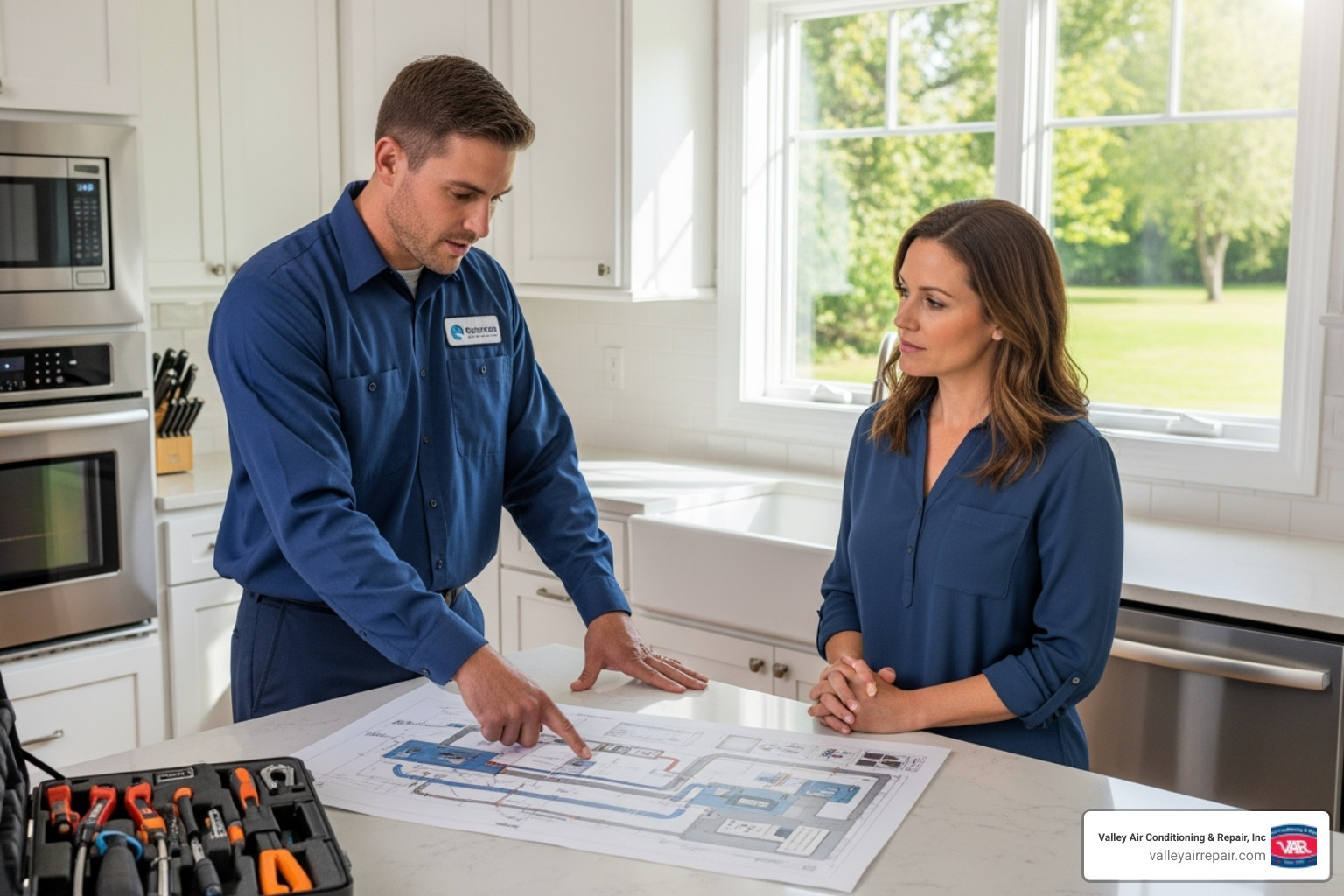
The key is understanding what makes your home unique and matching it with the right system. Let's walk through the most important factors together.
Choosing the Right Type and Size for Your Home
Your home has its own personality, and your HVAC system should complement it perfectly. The "best" system isn't the most expensive one or the one your neighbor just installed – it's the one that fits your specific needs.
System TypeLifespan (Avg.)Best ClimateEfficiency MetricFurnaces15-20 yearsColder climates with long heating seasonsAFUEAir Conditioners10-15 yearsWarmer climates with long cooling seasonsSEERHeat Pumps10-15 yearsModerate climates (efficient for both heating/cooling)SEER/HSPF
Here in the Valley, we see a lot of homes that would benefit from heat pumps because they handle both heating and cooling efficiently in our moderate climate. But every home is different – a larger family home might need a more robust system than a cozy starter home.
Size matters more than you might think. We can't stress this enough: an incorrectly sized system is like wearing shoes that don't fit. Too small, and your system will run constantly, struggling to keep up and driving up your energy bills. Too large, and it'll cycle on and off rapidly, creating uneven temperatures and poor humidity control.
That's why we use something called a Manual J load calculation. It sounds fancy, but it's really just a thorough way of figuring out exactly what your home needs. We look at your square footage, insulation quality, window types, how many people live there, and even which direction your house faces. This careful calculation ensures your new hvac system upgrade works efficiently from day one.
Understanding Efficiency Ratings: SEER, AFUE, and HSPF
Those three-letter acronyms on HVAC systems aren't just marketing speak – they're your roadmap to energy savings. Think of them as the "miles per gallon" rating for your heating and cooling system.
SEER (Seasonal Energy Efficiency Ratio) measures how efficiently your air conditioner or heat pump cools your home. The higher the number, the less energy it uses to keep you comfortable during those hot Valley summers.
AFUE (Annual Fuel Utilization Efficiency) is all about heating efficiency. If your furnace has a 90% AFUE rating, that means 90 cents of every dollar you spend on fuel actually heats your home – the other 10 cents goes up the chimney.
HSPF (Heating Seasonal Performance Factor) applies to heat pumps when they're in heating mode. Again, higher numbers mean better efficiency and lower energy bills.
The ENERGY STAR label is your friend here. When you see this certification, you know the system meets strict efficiency guidelines. It's like having a trusted friend recommend a restaurant – you can feel confident about your choice. More info about HVAC Installation in Fresno, CA
Why Professional Installation is Crucial for Your HVAC System Upgrade
Here's the truth: even the most efficient, top-of-the-line system can become a money pit if it's not installed correctly. We've seen it happen – homeowners invest in a beautiful new system, only to struggle with high energy bills and comfort issues because corners were cut during installation.
Proper installation affects everything. The refrigerant charge needs to be precise. The ductwork connections must be sealed tight. The electrical work has to meet code. One small mistake can reduce your system's efficiency by 30% or more.
Our NATE-certified technicians understand these details inside and out. We don't just connect the wires and call it done. We perform thorough ductwork inspections because leaky ducts can waste up to 30% of your conditioned air – imagine throwing away one-third of what you're paying for!
System longevity depends on proper installation too. A correctly installed system will serve your family reliably for 15-20 years. Poor installation can cut that lifespan in half, leaving you facing another replacement much sooner than expected.
There's also warranty protection to consider. Many manufacturers require professional installation to honor their warranties. DIY installation or hiring an unqualified contractor could void your warranty entirely, leaving you unprotected if something goes wrong.
Our customer-first philosophy means we take the time to do things right. Since 1970, we've built our reputation on safety and compliance, ensuring every installation meets manufacturer specifications and local codes. When you trust us with your hvac system upgrade, you're not just getting a new system – you're getting peace of mind.
Making Your Upgrade Affordable: Rebates, Credits, and Strategies
We get it – an hvac system upgrade represents a substantial investment in your home. But here's the good news: you don't have to shoulder the entire cost alone! Between government incentives, utility programs, and smart timing strategies, there are plenty of ways to make that shiny new system much more budget-friendly.
The key is knowing where to look and how to plan your upgrade strategically. We've helped countless Valley families steer these options over our five decades in business, and we're always happy to point you in the right direction.
How to Find and Use Rebates and Tax Credits
Think of rebates and tax credits as your reward for making an environmentally responsible choice. The government – both federal and local – genuinely wants to encourage homeowners to upgrade to more efficient systems. Why? Because it reduces strain on the power grid and helps everyone save energy.
Federal tax credits are particularly attractive because they directly reduce what you owe on your income taxes, not just your taxable income. These credits come and go with different legislation, so it's worth checking what's currently available when you're ready to upgrade.
State and local programs can be goldmines of savings. Many states offer grants or rebates specifically for installing heat pumps, upgrading to high-efficiency units, or improving your home's overall energy performance. These programs vary widely by location, so what's available in Fresno might be different from what's offered in other parts of California.
Your local utility company is another fantastic resource. Pacific Gas and Electric, for example, often runs rebate programs for customers who install qualifying high-efficiency equipment. These utility rebates are designed to help manage peak demand on the electrical grid while helping you save money – it's a win-win situation.
The application process is usually straightforward. You purchase and install your qualifying system, then submit your receipts and any required certification forms. The key is to check for available programs before you buy – some require pre-approval or have specific equipment requirements.
For a general idea of what government programs might look like, you can check for rebates and incentives offered by government programs. While this particular link shows a Canadian program, it illustrates the types of comprehensive energy efficiency initiatives that governments implement to support homeowners.
Beyond rebates and credits, smart timing can save you serious money. Off-season installation during spring or fall often means better deals and more flexible scheduling from contractors. Plus, you'll have your new system ready before the peak heating or cooling seasons hit.
Combining upgrades makes financial sense too. If both your air conditioner and furnace are getting long in the tooth, replacing them together can reduce labor costs since many components are shared. Matched systems also work together more efficiently than mixing old and new equipment.
Don't forget about financing options either. Many HVAC companies offer flexible payment plans that let you spread the investment over time, making it much easier to manage your budget while still getting the comfort and efficiency benefits right away.
Even maintaining your current system properly can buy you time to save up for an upgrade or wait for better incentive programs to become available. Regular tune-ups can extend your system's life and keep it running as efficiently as possible until you're ready to make the switch.
Conclusion
Your hvac system upgrade journey doesn't have to end with just understanding the benefits – it's really about taking that next step toward a more comfortable, efficient, and healthier home. Think of it as an investment that keeps giving back, month after month, year after year.
The math is pretty compelling when you add it all up. Those 20-40% energy savings we talked about? That's real money back in your pocket every single month. The consistent temperatures throughout your home? That's an end to the thermostat wars and hot-and-cold spot complaints. The cleaner air? That's fewer sneezes, less dust, and a healthier environment for your family.
But perhaps the best part is the peace of mind that comes with a reliable, modern system. No more crossing your fingers during the first heat wave of summer, wondering if your old AC will make it through another season. No more emergency repair calls on the coldest day of the year.
At Valley Air Conditioning & Repair, Inc., we've been helping families in the Valley make these important decisions since 1970. Whether you're in Laton, Lemoore, O'Neals, Parlier, Reedley, or Riverdale, we understand that every home is different, and every family has unique needs and budgets.
Our customer-first philosophy means we're not here to oversell or pressure you. We're here to listen, assess your situation honestly, and help you find the right solution. Sometimes that might mean a simple repair or tune-up can buy you another year or two. Other times, it's clear that an upgrade will save you money and frustration in the long run.
The beauty of working with a company that's built on trust and word-of-mouth growth is that we know our reputation depends on your satisfaction. We've been your neighbors for over five decades, and we plan to be here for many more.
Ready to explore what a modern, efficient HVAC system could do for your home? Schedule your AC tune-up in Fresno, CA today and let's start the conversation. Even if you're not ready to upgrade right now, a professional assessment can help you plan for the future and keep your current system running as efficiently as possible.







